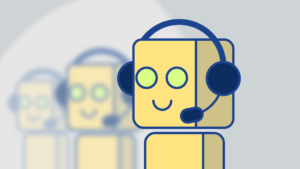Top Chat Tools, A round up

ChatBot Tools” are becoming a hot application category. ChatBots Tools allow a website to build their own interactive chat resource for their website, business, etc.
Here’s a list of several ones that we’ve found available now, from the easy to implement, to solutions specific on Facebook, and platforms that require development to add to your site or product.
Chatter On
ChatterOn is a chatbot development platform which enables businesses to build chatbots in a few clicks, with all the heavy lifting being handled by ChatterOn’s proprietary deep tech – Natural Language Processing and Flow builder. ChatterOn has been adopted by over 4300 businesses, who have developed a total of 6200 bots in the 39 days since launch indicating a strong product-market fit. Currently, we are growing over 35% WoW and all of the growth is organic. We have taken the first step in the direction of being a platform – we are launching multiple integrations for easier bot development to monetization to become a full-stack development platform. Our existing integrations with RadBots (monetization via ads) and many others are attracting developers as they provide significant value add over the core product – chatbot development.
Rebotify helps you build chat bot in a fun way. Rebotify is an online bot platform. Use Rebotify to create chat bot for Facebook, Slack, WeChat & more. It only takes 5 minutes to build and launch your bot. No programming required, just draw a flowchart. Build once, publish anywhere.
BOTNATION is a team of people experienced in the provision of complex digital solutions for both web and mobile internationally. We are based in Paris and Nantes. SIMPLE: No complex and demanding development needed. Not a single line of code on the interface. EFFICIENT: Take advantage of exclusive marketing features to make your chatbot more high-performing. INTELLIGENT: Integrated NLP module. Your bot understands you and learns. All done naturally.
LivePerson makes life easier by transforming how people communicate with brands. Our 18,000 customers, including leading brands like Citibank, HSBC, Orange, and The Home Depot, use our conversational commerce solutions to orchestrate humans and AI, at scale, and create a convenient, deeply personal relationship — a conversational relationship — with their millions of consumers. For more information about LivePerson (NASDAQ: LPSN), please visit www.liveperson.com.
Capio is developing the next-generation speech recognition and natural language processing technologies that are redefining human computer interaction. Built on deep learning and parallel computing principles, Capio’s unique architecture delivers an unmatched combination of speed and accuracy for speech recognition and contextual understanding. The result is a human-like and conversational interface that connects with devices of all types, enabling a quantum leap forward for in-car, voice-activated experiences.
Chatfuel is a useful tool for non-skilled developers. It allows you to create AI chatbot in Facebook You can refer to the external sources with the help of plugins and make your own chatbot. You can expect the platform to open itself to third-party plugins making it easier for anyone to contribute with their own plugins.
Api.ai is a unique conversational platform that lets you build brand centric, natural language interactions for all your applications, bots, services and devices. As it offers integrations with all the main platforms like Facebook, Slack, Alexa, etc, Api.ai is very easy to use and deploy.
Smooch acts as a connector between messenger apps like WeChat, Line, Facebook Messenger and business apps like Front, Zendesk, Scout and the rest. Once Smooch is configured, it would let your business app get all the incoming chat notifications sent by the messaging apps. Smooch lets you answer all the queries/conversations coming in from customers right from the business app itself.
Botsify is a paid subscription tool, an easy to learn tool that integrates other chatbots into Facebook Messenger, ala Home Page messengers. Very easy to setup, design commands, set up a web hook, and it’s ready to handle customer service for your company or product. The tool has smart AI to pick up new words and queries. You can teach new sentences and questions and if it ever fails to answer any question, then configure it to answer them. Another noted feature of Botsify is that it allows for human intervention at any time, so you can take over the chatbot to continue chat. Has a paid and free version.
ChattyPeople is a perfect to create a good and functional AI chatbot platform on Facebook, No coding knowledge necessary ,. It is extremely simple to create, probably the reason why entrepreneurs and smaller companies rely on it to stay with their customers 24/7. If you run an e-commerce website, then it can answer customer service questions and monetize your Facebook pages. And it’s free
Beep Boop is a simple hosting platform made for developers who need to integrate their chatbots with Facebook Messenger and Slack. It needs only a few minutes for setup and installation. You can visit Gthub, the famous version control repository and Internet hosting service to set up the code and then integrate the code with Beep Boop platform before linking it with your FB or Slack application. Again, for developers only.


